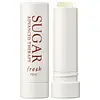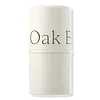What's inside
What's inside
 Key Ingredients
Key Ingredients

 Benefits
Benefits

 Concerns
Concerns

 Ingredients Side-by-side
Ingredients Side-by-side

Cera Alba
EmollientSimmondsia Chinensis Seed Oil
EmollientHydrogenated Olive Oil Decyl Esters
Emulsion StabilisingHydrogenated Palm Kernel Glycerides
EmollientRicinus Communis Seed Oil
MaskingVitis Vinifera Seed Oil
EmollientEthylhexyl Palmitate
EmollientParfum
MaskingHydrogenated Palm Glycerides
EmollientTheobroma Grandiflorum Seed Butter
Skin ConditioningPrunus Domestica Seed Oil
Skin ConditioningCopernicia Cerifera Wax
Limnanthes Alba Seed Oil
Skin ConditioningHydrogenated Vegetable Oil
EmollientPassiflora Incarnata Seed Oil
Skin ProtectingSucrose Tetrastearate Triacetate
EmollientCrithmum Maritimum Extract
Skin ConditioningCommiphora Mukul Resin Extract
Skin ConditioningRibes Nigrum Seed Oil
EmollientTocopherol
AntioxidantAscorbyl Tetraisopalmitate
AntioxidantTocopheryl Acetate
AntioxidantAscorbyl Palmitate
AntioxidantPEG-6 Isostearate
EmulsifyingCaprylic/Capric Triglyceride
MaskingAmmonium Glycyrrhizate
MaskingTrihydroxystearin
Skin ConditioningHesperetin Laurate
AntioxidantVanillin
MaskingButylene Glycol
HumectantBHT
AntioxidantCaprylyl Glycol
EmollientSodium Hyaluronate
HumectantHexylene Glycol
EmulsifyingPhenoxyethanol
PreservativeLimonene
PerfumingCitral
PerfumingBenzyl Alcohol
PerfumingLinalool
PerfumingGeraniol
PerfumingCera Alba, Simmondsia Chinensis Seed Oil, Hydrogenated Olive Oil Decyl Esters, Hydrogenated Palm Kernel Glycerides, Ricinus Communis Seed Oil, Vitis Vinifera Seed Oil, Ethylhexyl Palmitate, Parfum, Hydrogenated Palm Glycerides, Theobroma Grandiflorum Seed Butter, Prunus Domestica Seed Oil, Copernicia Cerifera Wax, Limnanthes Alba Seed Oil, Hydrogenated Vegetable Oil, Passiflora Incarnata Seed Oil, Sucrose Tetrastearate Triacetate, Crithmum Maritimum Extract, Commiphora Mukul Resin Extract, Ribes Nigrum Seed Oil, Tocopherol, Ascorbyl Tetraisopalmitate, Tocopheryl Acetate, Ascorbyl Palmitate, PEG-6 Isostearate, Caprylic/Capric Triglyceride, Ammonium Glycyrrhizate, Trihydroxystearin, Hesperetin Laurate, Vanillin, Butylene Glycol, BHT, Caprylyl Glycol, Sodium Hyaluronate, Hexylene Glycol, Phenoxyethanol, Limonene, Citral, Benzyl Alcohol, Linalool, Geraniol
Butyrospermum Parkii Butter
Skin ConditioningCera Alba
EmollientCarthamus Tinctorius Seed Oil
MaskingBorago Officinalis Seed Oil
EmollientArgania Spinosa Kernel Oil
EmollientRhus Verniciflua Peel Cera
EmollientMyrica Pubescens Fruit Wax
Skin ConditioningHelianthus Annuus Seed Cera
EmollientCitrus Aurantium Bergamia Fruit Oil
MaskingTocopheryl Acetate
AntioxidantOryza Sativa Bran Extract
Skin ConditioningLavandula Angustifolia Oil
MaskingHelianthus Annuus Extract
EmollientMelaleuca Alternifolia Leaf Oil
AntioxidantTocopherol
AntioxidantRosmarinus Officinalis Leaf Extract
AntimicrobialCitral
PerfumingLimonene
PerfumingLinalool
PerfumingButyrospermum Parkii Butter, Cera Alba, Carthamus Tinctorius Seed Oil, Borago Officinalis Seed Oil, Argania Spinosa Kernel Oil, Rhus Verniciflua Peel Cera, Myrica Pubescens Fruit Wax, Helianthus Annuus Seed Cera, Citrus Aurantium Bergamia Fruit Oil, Tocopheryl Acetate, Oryza Sativa Bran Extract, Lavandula Angustifolia Oil, Helianthus Annuus Extract, Melaleuca Alternifolia Leaf Oil, Tocopherol, Rosmarinus Officinalis Leaf Extract, Citral, Limonene, Linalool
Alternatives
Ingredients Explained
These ingredients are found in both products.
Ingredients higher up in an ingredient list are typically present in a larger amount.
Cera alba is beeswax, or the wax used by bees to make honeycombs. It is a texture-enhancer and emollient. A study from 2003 found beeswax to be a stronger emollient than ingredients such as petroleum jelly.
As an emollient, beeswax helps hydrate the skin by creating a barrier on top. This barrier traps moisture in.
Emulsifiers help prevent ingredients from separating. This helps create consistent texture.
The structure of beeswax is mainly long-chain alcohols and the esters of fatty acids.
There are three types of beeswax: yellow, white, and absolute. Yellow is pure beeswax taken from the honeycomb. White beeswax is created by filtering or bleaching yellow beeswax. Absolute beeswax is created by treating beeswax with alcohol. Beeswax used in cosmetics are purified.
Beeswax has been used throughout history and even in prehistoric times. Some common uses for beeswax still used today are making candles, as a waterproofing agent, and polish for leather.
Learn more about Cera AlbaCitral is a fragrance and used to add a lemon-like scent to products. It is both naturally found in plants and created synthetically. In plants, it is commonly occurring in lemon myrtle, lemongrass, lemon tea-tree, lemon verbena, and other citruses.
The EU mandates Citral be listed separately as a fragrance. It is a known allergen and may cause contact dermatitis. Citral can also used as a masking ingredient.
The term 'fragrance' is not regulated in many countries. In many cases, it is up to the brand to define this term. For instance, many brands choose to label themselves as "fragrance-free" because they are not using synthetic fragrances. However, their products may still contain ingredients such as essential oils that are considered a fragrance.
The term 'citral' is a collective term for two geometric isomers: geranial/Citral A and neral/Citral B.
Learn more about CitralLimonene is a fragrance that adds scent and taste to a formulation.
It's found in the peel oil of citrus fruits and other plants such as lavender and eucalyptus. The scent of limonene is generally described as "sweet citrus".
Limonene acts as an antioxidant, meaning it helps neutralize free radicals.
When exposed to air, oxidized limonene may sensitize the skin. Because of this, limonene is often avoided by people with sensitive skin.
The term 'fragrance' is not regulated in many countries. In many cases, it is up to the brand to define this term. For instance, many brands choose to label themselves as "fragrance-free" because they are not using synthetic fragrances. However, their products may still contain ingredients such as essential oils that are considered a fragrance.
Learn more about LimoneneLinalool is a fragrance and helps add scent to products. It's derived from common plants such as cinnamon, mint, citrus, and lavender.
Like Limonene, this ingredient oxidizes when exposed to air. Oxidized linalool can cause allergies and skin sensitivity.
This ingredient has a scent that is floral, spicy tropical, and citrus-like.
Learn more about LinaloolTocopherol (also known as Vitamin E) is a common antioxidant used to help protect the skin from free-radicals and strengthen the skin barrier. It's also fat soluble - this means our skin is great at absorbing it.
Vitamin E also helps keep your natural skin lipids healthy. Your lipid skin barrier naturally consists of lipids, ceramides, and fatty acids. Vitamin E offers extra protection for your skin’s lipid barrier, keeping your skin healthy and nourished.
Another benefit is a bit of UV protection. Vitamin E helps reduce the damage caused by UVB rays. (It should not replace your sunscreen). Combining it with Vitamin C can decrease sunburned cells and hyperpigmentation after UV exposure.
You might have noticed Vitamin E + C often paired together. This is because it is great at stabilizing Vitamin C. Using the two together helps increase the effectiveness of both ingredients.
There are often claims that Vitamin E can reduce/prevent scarring, but these claims haven't been confirmed by scientific research.
Learn more about TocopherolTocopheryl Acetate is AKA Vitamin E. It is an antioxidant and protects your skin from free radicals. Free radicals damage the skin by breaking down collagen.
One study found using Tocopheryl Acetate with Vitamin C decreased the number of sunburned cells.
Tocopheryl Acetate is commonly found in both skincare and dietary supplements.
Learn more about Tocopheryl Acetate